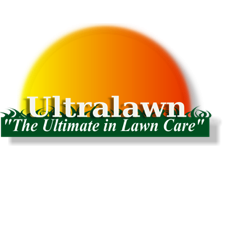
Sod Webworm



Ultralawn Incorporated
1055 East 260th Street
Euclid, OH 44132
216.731.7756
440.951.3738
Office hours Monday-Friday 9-3 call today with any questions

Description:
The adults are beige colored moths, which are approximately ½ -
¾ inches long. They sometimes have a small, dark line on the top
of each wing cover. Two small finger-like projections are visible at
the front of the head. Adults will fly upward when disturbed by
movement (Examples: a person walking by or a mower
approaching) and will move a short distance before darting back
into the grass. The caterpillar, which is the stage that actually
damages turf grass, reaches up to 1 inch in length when fully
grown, but an eighth of an inch long at the beginning of its
development. The color is greenish, gray or brownish, and usually
has dark spots scattered along the body.
Life Cycle: Most species spend the winter as large caterpillars in tent-like structures, which larvae weave to
provide extra protection against temperature extremes, a few inches below the surface of the lawn. When the
caterpillars become active again in the spring, they feed for a short period before pupating and emerging as
moths. Female moths will fly around just above the surface, popping out individual eggs as they fly. The eggs,
which land in the turf, hatch into small caterpillars about a week later. These begin feeding, almost
immediately, on the leaf tissue above the thatch. Caterpillars will go through between six to ten molts as they
feed and grow. Eggs, small caterpillars, large caterpillars, pupae and adults can be found at any given time in
turf grass in July through September.
Damage: Sod webworms feed on a variety of grasses. While they often thrive on lush, healthy grass,
webworms commonly attack Kentucky bluegrass, perennial ryegrass, fine fescue and creeping bentgrass
maintained at a variety of mowing heights. Webworm damage starts as small yellow or brown patches in the
leaf blades in lawn areas. As the caterpillars feed and grow, the patches gradually increase in size. Caterpillars
are nocturnal, so they will not be noticed on the surface during the day. However, when pulling the turf blades
apart, gently checks the outskirts of damaged areas, you should be able to find a caterpillar. By midsummer,
large sections of the lawn may be destroyed by the sod webworm caterpillars, which prefer sunny areas.
Webworm damage is particularly severe in drought conditions, in part, because the turf is less able to recover
from caterpillar feeding. Damage is usually most apparent in July through September, when temperatures are
highest and cool season grasses are not growing vigorously. Affected areas recover slowly from webworm
feeding.
Management: The key to successful control is to apply an insect control when most of the caterpillars are still
young. The insect control should be watered in lightly, just enough to move the insecticide off the blades and
into the upper thatch. If possible, the area should not be mowed for two days after application.



















